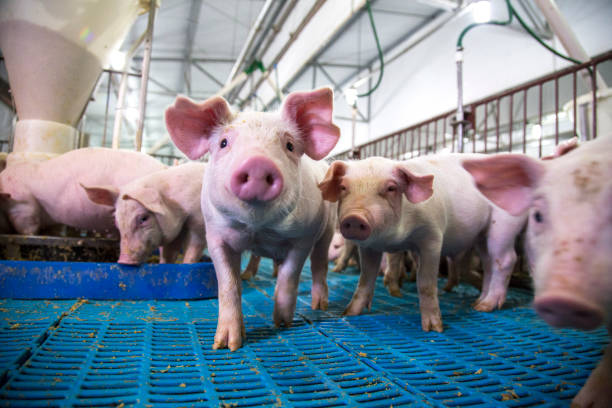he war in Ukraine has an impact on every sector in agriculture, and that includes pig production. Which short term and longer term effects can be expected? The French Pork and Pig Institute (IFIP) drew up an analysis to look into the future.
The war in Ukraine is a source of great tension on the markets for animal feed raw materials, with repercussions on livestock production being very likely. As far as the pork market is concerned, the main impact will be above all indirect. EU pork product trade with Ukraine is limited, whereas trade with Russia dried up in 2014 as a result of African Swine Fever as well as of the first economic embargo. Nevertheless, the entry into a new diplomatic and economic era could strengthen exports of pork and wheat from Russia to Asia and in particular China, exacerbating competition in this area for European and American exporters.
Expected impacts on livestock feed costs
The main consequence of this war relates to its effect on raw materials; in particular the prices of wheat and corn, of which Russia and Ukraine are major exporters.
The article explains in detail the impact on the raw materials market. Since its publication, futures markets have shown a strong increase. The conflict will bring volatility and uncertainty in the markets; importers of Russian wheat and Ukrainian corn will find other sources of supply (Argentina, USA) while the Sino-Russian axis could strengthen.
Late February and early March, economic sanctions imposed by international powers have caused the price of the Russian rouble to fall sharply. Should the rouble remain weak, then the competitive advantage to Russian exports could offset the weight of the sanctions and the logistical impacts of the conflict. Russian exports are also subject to a quota policy, the volumes of which were determined before the conflict until June 2022.
War between Russia and Ukraine will interrupt Ukraine’s pork production, as well as the country’s imports. That will have an immediate effect on the European market, even though it will be in a targeted and limited way.

Pork production in Ukraine has been stable, with nearly 750,000 tonnes produced annually in recent years. Domestic demand is sluggish due to limited purchasing power, especially since the 2014 crisis, which results in consumption of less than 20 kg carcass equivalent per capita/year, much lower than neighbouring Poland. Imports are limited to complementary supplies of meat, offal and fat for national processors, and amount to around 5% of domestic supplies. National production has been limited in recent years by the spread of African Swine Fever within farms. The ongoing conflict with Russia will temporarily stop Ukrainian pork production, as well as trade with its partners.
The EU exports around 93,000 tonnes of pork and by-products to Ukraine per year. Regular flows from predominantly Poland are recorded. In addition, Ukraine is an escape market for European pork when the European supply is too abundant and Asian demand weakens. In 2021, sales to Ukraine increased by nearly 16% in one year. The Russia-Ukraine dispute could therefore represent a real difficulty for Polish exporters (55,3000 tonnes per year).
Full article [PigProgress]
Eastern European Agricultural Alliance’s Reports: we are helping companies in Eastern European and CIS region to trade and manage their risk better by providing consistent data and accurate analysis of the agricultural markets.





